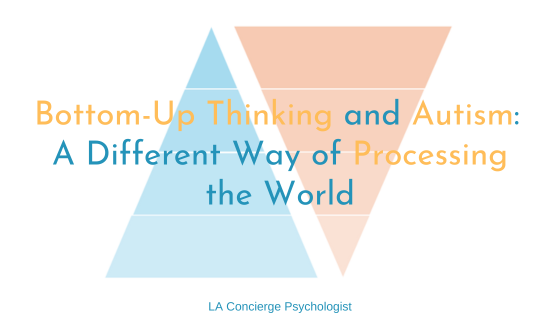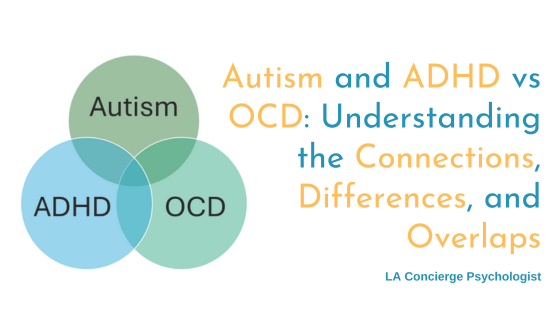Several factors make autistic people more vulnerable to developing eating disorders. Both autism and eating disorders are linked to sensory issues around food and repetitive or ritualistic behavior. An autistic person might have an eating disorder that’s based on weight gain and control. Alternatively, the behavior might stem from characteristics associated with being autistic. No matter the origin, eating disorders in autistic people can still be dangerous.
Avoidant Restrictive Food Intake Disorder (ARFID)
It’s first important to understand that, for many autistic people, weight isn’t a factor in their disordered eating. Instead, they may have Avoidant Restrictive Food Intake Disorder (ARFID). This manifests like many other eating disorders, such as anorexia. However, it is not focused on body image or anxieties around weight and appearance.
Instead, this eating disorder is based around limitations around foods. For example, which foods can be eaten, which foods cause distress, and when food can be consumed. Not all autistic people with eating disorders have ARFID, and not all people dealing with ARFID are autistic. But, given some of the issues discussed in this blog, you’ll be able to see that there is a major overlap. It’s important to understand what’s causing the eating difficulties. That way, the autistic person can find the right kind of support for their eating issues and not damage their health.
Autistic Characteristics that Result in Disordered Eating
Sensory Issues Around Food
Autistic people sometimes struggle with sensory issues surrounding food, such as certain foods having intolerable tastes, textures, and/or smells. For example, some autistic people can only handle one type of texture. For instance, crunchy foods like crackers and pretzels. Smooth foods, on the other hand, like pudding or yogurt, are unbearable and make them gag.
This sensitivity can lead to disordered eating. The autistic person may not be concerned with weight gain but may still develop restrictive eating patterns around their sensory needs. To an outsider, it simply appears that the autistic person has restrictive eating patterns. To the autistic person, they are carefully choosing foods that are physically tolerable to consume.
It’s important to note that, for autistic people, sensory issues surrounding food cannot be overcome through simple exposure. Forcing someone to eat foods that they find distressing will only worsen symptoms of their eating disorder. Food is stressful enough; being forced to endure sensory intolerances will do no more than create further or stronger aversions. The process of integrating new foods must be handled on an individual basis, with the input of the autistic person, so that food does not become an even more unpleasant experience.
Routines
People commonly associate ritualized eating with eating disorders. This behavior shows up for many autistic people as well. Autism may mean that someone has a routine around eating, such as a way of eating something or a time they need to eat. Changing that routine may cause stress or anxiety. If life circumstances force an autistic person’s routines to change and they cannot eat when they feel like they should, they may go through prolonged periods where they simply don’t eat.
Routines are a way for autistic people to self-regulate. Change to any routine creates stress. And, when food is involved, this stress can have significant bodily consequences. It may make it physically more difficult to eat because they are too stressed. For some autistic people, it is easier to just not eat, rather than try to eat without their established routine.
Rules
Like routines, some autistic people adhere to strict rules around their lives and activities. These are, again, a way to regulate their environment and reduce stress. Sometimes, a parent or partner of an autistic person may start focusing on weight and setting up rules for themselves or the household around dieting and avoiding weight gain.
Depending on the autistic person, these rules may become internalized and create the foundation for a weight-based eating disorder. Food rules, such as avoid carbohydrates, become set in stone, not just pieces of well-meant (but destructive) advice. Food restriction becomes part of the autistic person’s rules around acceptable eating habits.
It’s critical not to set up destructive thought patterns and to speak about bodies in a neutral fashion. This is true for every relationship, but even more so for those who have influence over an autistic person, who may take commentary and integrate it into their personal code conduct.
Missing Signals
Many autistic people struggle with interoception. This means that they have a difficult time feeling and interpreting their body’s signals. This connects with disordered eating behavior because it means they may miss their body’s cues that they are hungry or full. They may not recognize their hunger until symptoms like stomach pain, headaches, or mood swings. Or if their minds focus elsewhere or hyperfocuses on a passion, they may not remember to eat even though a whole day has passed.
If food isn’t intentionally integrated into an autistic person’s routine, it’s easy to forget about it because they don’t notice naturally occurring, internal hunger cues. When they do realize they need to eat, if they don’t have sensory-friendly foods available, they may be more inclined to skip the meal rather than risk an unpleasant experience.
On the flip side, an autistic person may overeat because they don’t realize they’re full until they are painfully full. This can make mealtime very stressful because they don’t know when they may have put themselves into a bad situation. Regulating food intake is one of the only ways to deal with this. However, doing so can cause some of the issues we’ve talked about above regarding routines and rules. The autistic person might need to develop very strict routines to cope with their disconnection to their body. Unfortunately, if they don’t do this carefully, it can lead to some of the rituals that result in disordered eating behaviors.
Professional Support for Autism and Disordered Eating
There is a high level of crossover between autism and eating disorders. Sensory issues, routines and rules around food, and interoception challenges make it harder for many autistic people to eat and judge their body’s food needs.
Understanding the root of the disordered eating behaviors will help an autistic person and their support system figure out what the best supports will be. Neither eating disorders or autism are a one-style-fits-all. Their co-occurrence should be treated with just as much individualized care and support. Send us a message to see how we can help.



